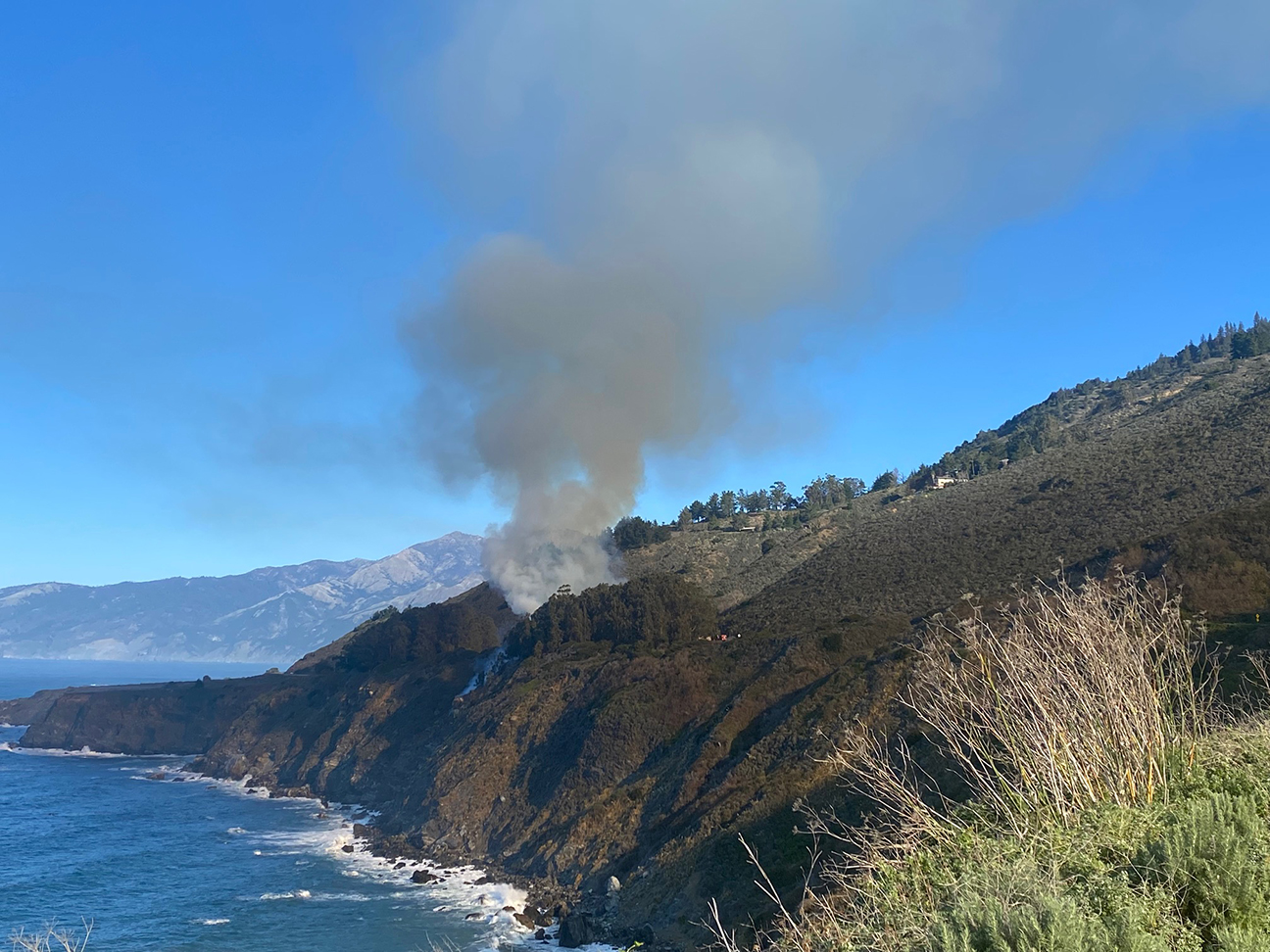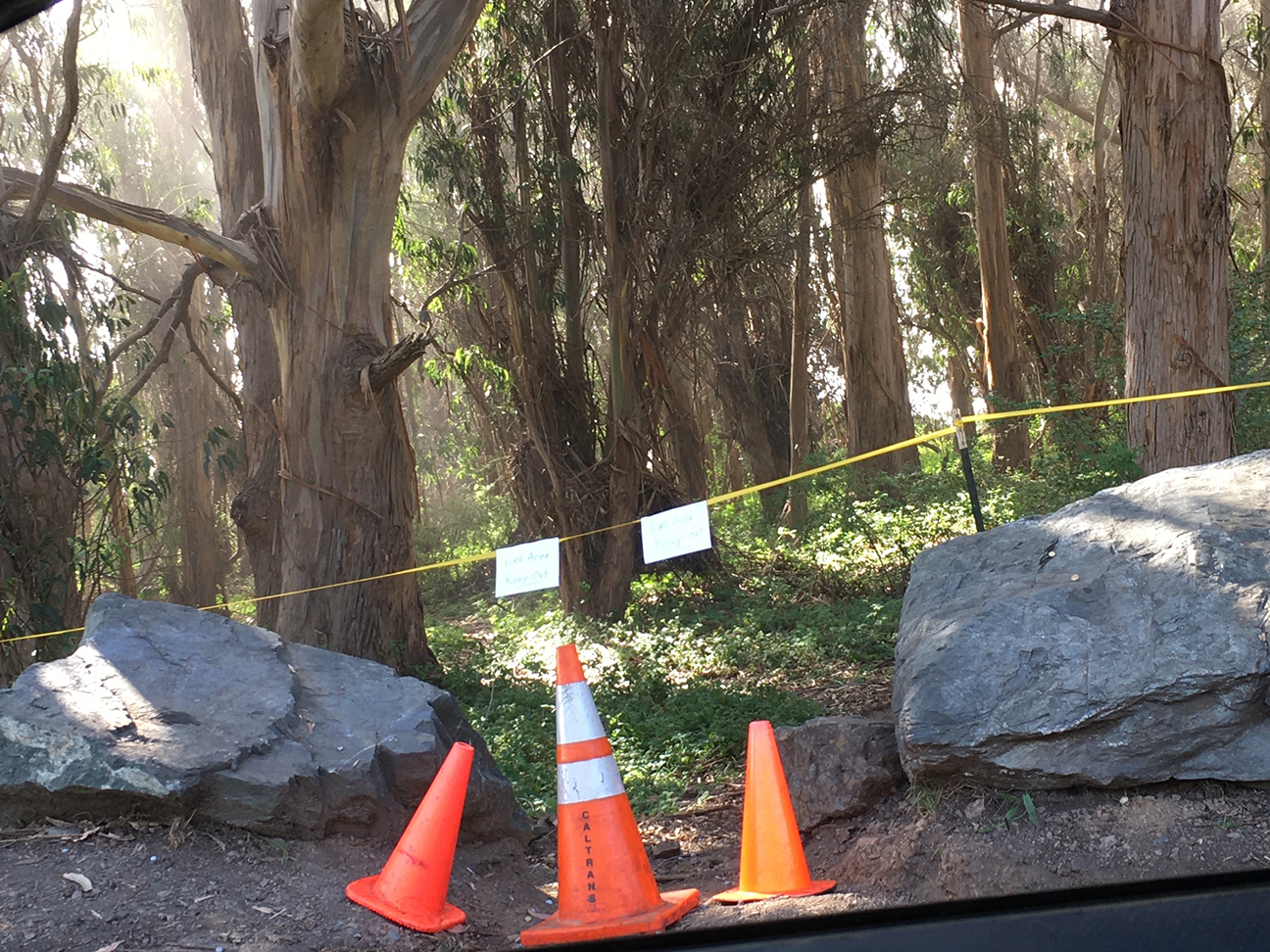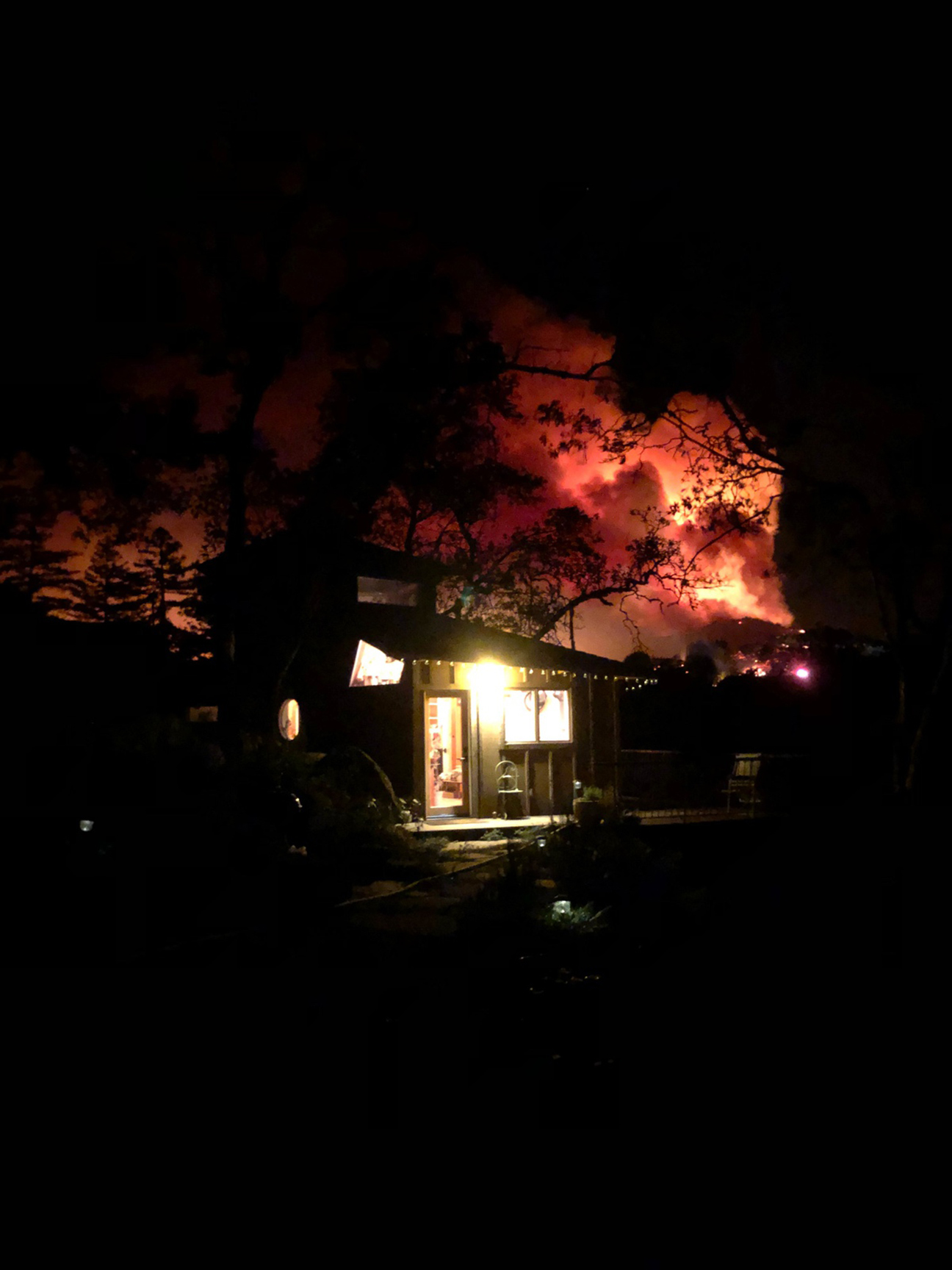| CLIMATE CHANGE
By Kate Novoa
There is something that happens to me when the first whisper of fire hits my consciousness, no matter if it reaches me through my screen, my phone, or my senses. My reaction is the same. The adrenaline begins and I know my upcoming days, weeks, months are no longer my own. Big Sur had two fires in two weeks, both human-caused, in the middle of winter. We are not accustomed to this. This is not normal … or is it?
Fire. It is a way of life for all who live in Big Sur and other areas of California. The Wildland-Urban Interface, better known as the WUI, is a zone of transition between wildland (unoccupied land) and human development. Communities in the WUI are at risk of catastrophic wildfire. According to the Forest Service, as of 2010, almost one-third of the houses in California are in the Wildland-Urban Interface.
In my mind there is no question that climate change is a factor in wildfires here in California and in Big Sur.
Enlarge

The Fires
On Jan. 21, 2022, the Colorado Fire broke out in Palo Colorado Canyon, caused by an escaped backyard burn (burn permits were rescinded the next day). The Colorado Fire was fed by offshore winds with gusts of 70-80 mph. By 8:30 p.m., I was getting reports and photos of how fast it was spreading — unbelievably fast — because of the winds. Fortunately, they blew away from the rest of the Palo Colorado Canyon community. Nevertheless, Monterey County Sheriff’s deputies were sent to knock on doors to deliver mandatory evacuation notices to more than 50 residents in the region.
“We have a home in the canyon that goes under the Bixby Bridge,” said Clay Jackson, a reader of my Big Sur Kate blog, a couple of days after that frightening night. “I was there self-isolating related to COVID since our daughter is expecting a second child very soon and also has a 2-year-old.
“The flames were easily visible on the ridge that goes into the Smith Ranch and up to the ‘glass house’ (at the top of the hill on the north side of Bixby Bridge). The wind appeared to be consistently in a west/southwest direction. Yesterday I was the only one still in the canyon. Had to drive to Big Sur to get cell coverage to call my family. No other cars on the road there which was a bit eerie.”
In his email, Jackson continued: “At about 5 p.m. I was coming back from a walk and two incredibly friendly police officers had tagged the area and our home and advised me of the mandatory evacuation. I ate as much of the remaining coffee ice cream as I could as it was melting! Packed up and left. During the day Cal Fire helicopters flew over our home at least 100 times … Small flickering flames were visible on the east side of Highway 1. Once again I was the only one on the road heading north to the road closure point.”
The healthier our forests are, the better they can continue to keep the balance in the cycle of emissions and absorption.
At around 7 a.m. on Feb. 2, 2022, just shy of two weeks from when it started, Cal Fire declared the Colorado Fire 100% contained at 687. An hour later, my son and several other South Coast locals were fighting a brush fire on the southern end of Big Sur, in a eucalyptus grove just south of Jade Cove.
Big Sur Fire was the first agency on scene and the U.S. Forest Service arrived shortly thereafter. This fire was from a smoldering campfire that had been abandoned. The Jade Fire, as it was named, was contained around noon at around 2-3 acres.
Crews from USFS stayed on site all night and most of the next day to be sure it was completely out.
The Jade Fire had three significant advantages. It had the Pacific Ocean on one side and Highway 1 on the other, both excellent fire breaks. It also started in the morning, so crews had the advantage of daylight to fight the fire. The winds that morning were quiet.
Had there not been the Colorado Fire in close time proximity, this fire would have received no attention at all, but it was only Feb. 2, and Big Sur, known for not just her spectacular landscape but also her spectacular fires, had experienced two fires in the middle of winter.
Enlarge

Climate Change
The science is clear. Climate change plays an undeniable role in the unprecedented wildfires of recent years. More than half of the acres burned each year in the western United States can be attributed to climate change, according to an article in Scientific American. “The number of dry, warm, and windy autumn days — perfect wildfire weather — in California has more than doubled since the 1980s.”
Without reduction of greenhouse gases, forests in the West, including Big Sur, could experience an increase in area burned of more than 78% by 2050. California Gov. Gavin Newsom characterized recent wildfires as a “climate damn emergency.”
It is not unreasonable to anticipate that the Dolan Fire of Big Sur’s 2020 wildfire season could become a regular occurrence or even worse, but that’s exactly what could happen.
Since 2000, fifteen forest fires in the United States have caused at least $1 billion in damages each, mainly from the loss of homes and infrastructure, along with firefighting costs. The 2017 wildfire season was well above average, with deadly fires in California and throughout the West, including Montana, Oregon, and Washington. The 2018 wildfire season went on to also break records as the deadliest and most destructive season on record in California. NOAA estimates total costs of wildfires in 2017 and 2018 to be more than $40 billion.
According to the Center for Climate Energy Solutions, “In 2020, five of the six largest fires on record burned in California. Wildfires across the West led to weeks-long periods of unhealthy air quality levels for millions of people.”
The National Prescribed Fire Act of 2021 would support controlled burns as an essential science-based strategy for reducing hazardous fuels.
Climate change has been a key factor in increasing the risk and extent of wildfires in the Western United States, and specifically in California, a state known for its love affair with the automobile and the classic “road trip.”
Research shows that changes in climate are creating warmer, drier conditions. Increased drought, and a longer fire season, are boosting these increases in wildfire risk. For much of the U.S. West, projections show that an average annual temperature increase of 1 degree would increase the median burned area per year by as much as 600% in some types of forests.
Wildfire affects climate change in two ways: First, the fires themselves create greenhouse gasses and fire destroys the very best carbon neutralizers on the planet — our oakland forests,
The coast live oak, native to Big Sur, is one of the greatest carbon sequestrators in the world. A balanced approach that addresses both reducing carbon emissions and forest management, which includes fuel reduction, is needed. The healthier our forests are, the better they can continue to keep the balance in the cycle of emissions and absorption.
Enlarge

Forest Management
As I reported in Voices in 2019, firefighting tactics changed over a century ago, during the notorious Big Burn in Northern Idaho in 1910. Instead of allowing wildfires to burn themselves out, the federal government employed aggressive firefighting techniques. That fire killed 78 firefighters. The Big Burn set our current fire fighting philosophy into motion. Extinguishing wildfires within the first 24 hours after they start became the goal.
“Fuel treatments” reduce the buildup of vegetation that has resulted from nearly a century of fire suppression. Twenty million acres of forests across California could now benefit from fuel treatments like prescribed burns, purposely-set fires intended to safely reduce fuel overgrowth, or forest thinning.
In this era of climate crisis, the question is not ‘if an acre of forest will burn,’ it’s ‘when.’” Senator Ron Wyden, D–Ore.
The Forest Service hopes to treat 500,000 acres per year. Sen. Ron Wyden, D–Ore., introduced the National Prescribed Fire Act of 2021. The proposal would support controlled burns as an essential science-based strategy for reducing hazardous fuels. The legislation would also increase the pace and scale of controlled burns, create a pre-season controlled burn workforce, and give states more flexibility to regulate controlled burns in winter months to reduce catastrophic fires and dangerous smoke in the summer.
“In this era of climate crisis, the question is not ‘if an acre of forest will burn,’ it’s ‘when,’” said Wyden. “The wildland firefighters I’ve spoken with would rather have that acre burn in the cooler, wetter months, with firefighters at the ready, rather than scrambling to fight a wildfire that ignites on the hottest, driest, windiest days of the year in the backyards of our rural neighbors.”
Forest resilience will require cooperation between many individuals and organizations — from the household to the federal level, from emergency preparedness to disaster-resistant building codes.
We have had fires in that eucalyptus grove near Jade Cove before, several times, and during winter. They never garnered the attention that the Jade Fire did this month, all because it started on the day the Colorado Fire ended. All this attention may actually help our fire season this year.
Earlier this week, I drove by the infamous grove and saw that Patrol 17, our local Pacific Valley Station patrol, was there to make certain campers knew he was there and were abiding by campfire regulations.
“These recent fires along the Big Sur Coast are another vivid reminder that fire season is year-round, and visitors to the national forest need to take every precaution to ensure that they don’t accidentally spark a wildfire,” Andrew Marden, public information officer for the U.S. Forest Service, told me.
In addition to the local measures, we need to do our best to stop climate change. We need to reduce greenhouse gas emissions. It is an essential part of protecting our communities and ecosystems in the future.
Watching Monterey County encourage and promote “The Ultimate Road Trip” on Highway 1 through Big Sur, I have to wonder how we can support both the vision of a reduction in greenhouse gasses and an ultimate road trip for over 6 to 10 million people a year, in order to protect not just this special place, but the carbon-reducing trees with which we are lucky enough to live.
A study appearing in next month’s edition of Forest Ecology and Management suggests drastically thinning Sierra Nevada forests by up to 80%. It adds to the debate about how to protect fragile forest ecosystems as climate change exacerbates threats.“This is a fundamentally different approach to growing and managing forests,” said lead author Malcolm North, a U.S. Forest Service research ecologist and professor at UC Davis.
Have something to say about this story? Send us a letter.